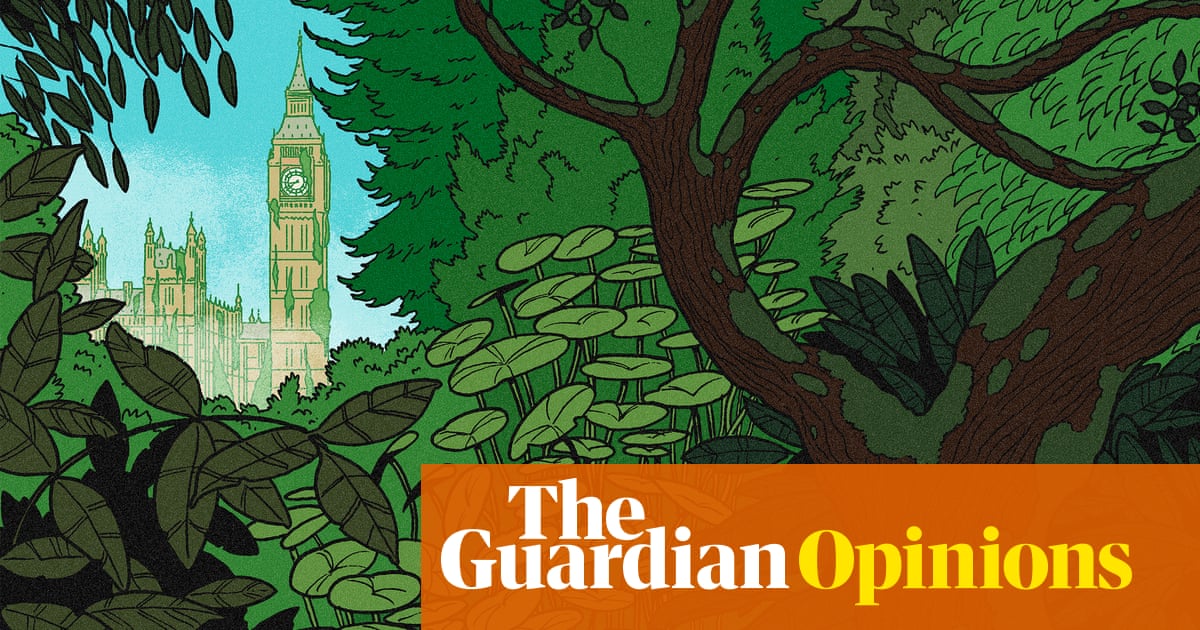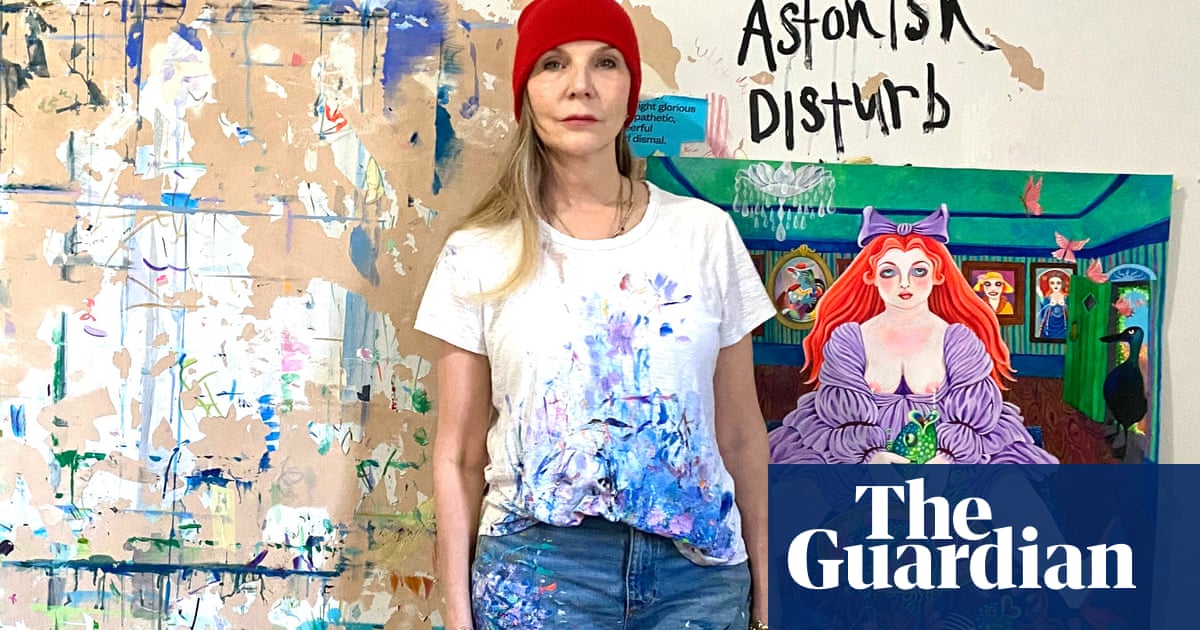
Since he was seven years old, Donavon Smallwood had lived in the same apartment in Harlem close to the northern tip of Central Park. As a teenager, he hung out there with his friends and, later, as he became interested in photography, he would often wander through the park with his camera looking for hidden places where the clamour of the city seemed a world away. “So many urban communities don’t have any nature spaces,” he says, “so I was lucky to have one close by.”
In 2019, he had “a vague idea for a project about walking and looking”, a flaneur’s take on the park as a place in which to lose oneself. Throughout the spring and summer of 2020, while New York was in lockdown, he photographed in and around the wooded north-western corner of the park, where ravines, glades and manmade waterfalls give the impression of a natural wilderness. Often, on his way there and back, he encountered the same people, locals mainly, for whom the park was a place to escape the constrictions of the Covid pandemic.
“I didn’t know any of them,” he says, “but I began asking them if we could meet so I could photograph them just being themselves, relaxing in nature. Most people agreed to do it and, when we found a location, I’d ask them to sit naturally for about five or 10 minutes. The mood I was after came quite easily.”
That mood gave his project its evocative title: Languor. The series comprises landscapes that accentuate the beauty and stillness of the park’s secluded places and what Smallwood calls “candid and instructed portraits of black people at ease in nature”. Shot in black and white and printed by Smallwood himself to accentuate the texture of hair and skin as well as tree and leaf, these quiet but compelling images won him the 2021 Aperture Portfolio prize last month. A photobook of the same name, published by Trespasser books, will follow soon.
“It’s all been a bit surprising,” says Smallwood, who is 27 and self-taught apart from a single class on photography in high school. “When I look back, I can see that my own mood reflects what I see and what I produce. When I began photographing in the park, I’d go out and walk around for as long as I could, but I was always pretty relaxed about it. Sometimes, I’d maybe even take a nap. In my own way, I was seeking a process and it arrived out of me doing it.”
Central Park has always been a magnet for photographers, who have tended to train their eye on the parade of local people that makes it such a vivid microcosm of New York life in all its diversity and often extravagant lack of self-consciousness. In the early 1990s, Bruce Davidson famously spent time there for his photobook, Central Park, while Tod Papageorge chronicled its reveries and encounters over several decades for his classic Passing Through Eden. In March of this year, Irina Rozovsky published In Plain Air, a luminous evocation of Central Park’s lazy, laid-back summer atmosphere, which shares something of Smallwood’s languorous mood.
Languor, though, is different, not only in what Aperture aptly called its “envisioning of black tranquillity”, but because Smallwood has rendered the location almost unrecognisable. His leafy glades, streams and dappled shades evince a sense of serenity, so much so that, if you came to these images without prior knowledge, you’d be hard pressed to identify their location. “Languor is not really about Central Park,” Smallwood says. “Its subject is what it’s like to be a black person in nature.”
As such, it deftly subverts the received image of Central Park as an environment that black people have often had to negotiate rather than simply be in. The park’s history is punctuated by incidents that echo the racial tensions of the city that surrounds it. In 1989, for instance, a group of young black and Hispanic teenagers who became known as the Central Park Five were wrongly convicted of the brutal rape of Trisha Meili, a white jogger, a case steeped in controversy and racial stereotyping. More recently, in May of last year, Amy Cooper, a white woman, called the police on Christian Cooper (no relation), a black man who, while birdwatching in a wooded area of the park, had asked her to put her dog on a leash as required by park rules. He filmed part of her frantic reply: “I’m taking a picture and calling the cops. I’m going to tell them there’s an African-American man threatening my life.” Their encounter went viral within hours of it being posted online.
While also being a nature space, then, Central Park is also inevitably an extension of the city, its often fraught racial dynamic and its history. “I grew up in New York, so I was always aware of the tensions,” says Smallwood, “and, because I spend so much time in the park, I actually know where the Amy Cooper incident took place. It’s a familiar place to me.”
Researching the park’s history, Smallwood happened upon a short online documentary, The Lost Neighbourhood Under New York’s Central Park. It tells the fascinating story of Seneca Village, a 19th-century African-American community, which existed for several decades in the rural outskirts of Manhattan, before it was demolished to make way for the park.
“New York has so much hidden history that we just don’t learn about,” he says, “but this was close to home. It just moved me so much. In the 19th century, the upper regions of what is now Central Park were mainly grasslands and the people who purchased land and created a community there were escaping the overcrowdedness and the racism of Manhattan. They built a few hundred houses where they could exist in relative peace. There is even some speculation that it was linked to the Underground Railroad [the network of secret routes created to help slaves escape into free states]. Then, suddenly, it was torn down. It was strange for me to find out that part of the place I know and love and spend so much time in was built over what once was a black community.”
The documentary also prompted him to interrogate his own idea of nature. “At the same time I saw the film I was reading William Blake a lot. To Blake, nature was chaos. Humanity was the taming of nature, making gardens, homes, communities. By doing that, you are essentially making what humanity is. I thought about that a lot, how the Seneca Village community was, in effect, the opposite of that: humanity being lost to nature.”
Smallwood’s images, though informed by his eclectic reading and research, present nature and humanity existing in a kind of blissful, Eden-like harmony. In Languor, as befits its title, Central Park is rendered as a contemporary source of tranquility, even sanctuary, for black people escaping the clamour of the city, the constrictions of the lockdown and the relentless political turbulence of an America riven by racial tensions. In Smallwood’s poised, intimate portraits, his subjects seem at one with nature and with themselves. It is only in the final image, in which distant buildings rise over trees and water, that the spell is broken and the city makes its looming presence felt.












